;

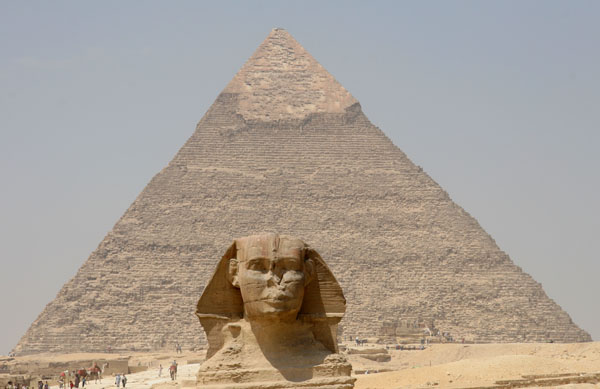
My trip to the Middle East began as a fall back plan to joining my girlfriend Carly in Sudan
to assist the EU and UN as independent observers to their democratic national election. But
instead of observing history in the making, I viewed what is likely the oldest historic tourist
destination in the world.
|
|
Since April is in the tail end of the tourist season and only having two weeks off I did not
make any trip reservations besides my flight to Luxor on the Nile, meeting Carly in Cairo a
week later, and then my flight back home from Sharm-el-Sheikh on the Sinai Peninsula the rest
was to be made up as I traveled along!
|
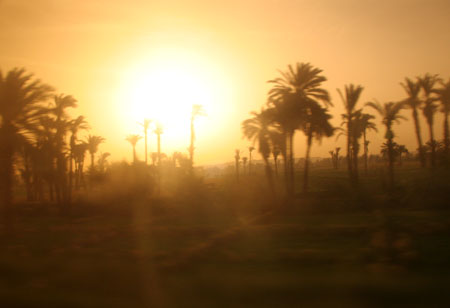 |
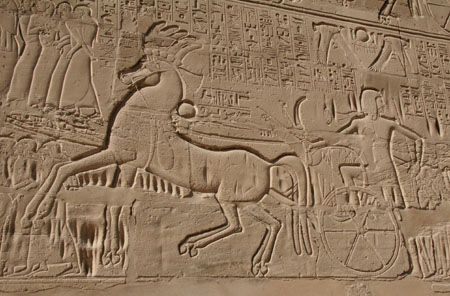 |
Landing in Luxor, drained after almost 24 hours of flights and layovers, I quickly learned
some important lessons. The first is that more often than not the locals will try to take
advantage of tourist’s pocket book to the greatest extent possible and the second is that
they are persistent! Dazed and groggy I collected my bags and braced myself for the barter
process for taking a taxi to town. After several minutes of haggling back and forth, both
of us acting hurt, disgusted, and uninterested we finally settled on a reasonable rate.
While loading the bags I confirmed the cost once more and that is when he pulled a dirty
trick and said the amount is in dollars, when I was assuming Egyptian pounds which he of
course understood (a 5:1 rate)… after more haggling I was truly hurt, disgusted, and
uninterested in spending any more of my vacation at the car park – I gave into a much too
high cost and so extended the correct assumption that tourists can be taken advantage of.
|
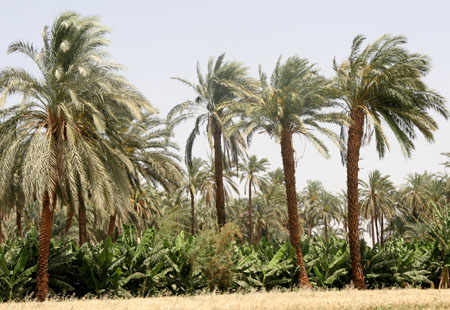
|
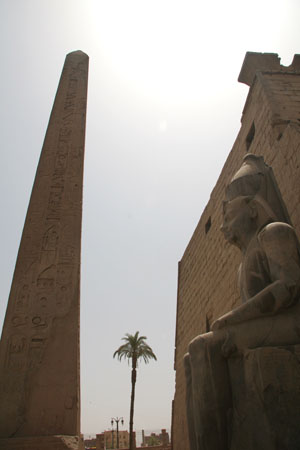 |
If you can accept the incessant attempts of shop keepers, camel men, felucca captains,
guides, and others to take your money – you will see that Egypt holds treasures and
wonders that well outshine the coinage they may gain from you.
|
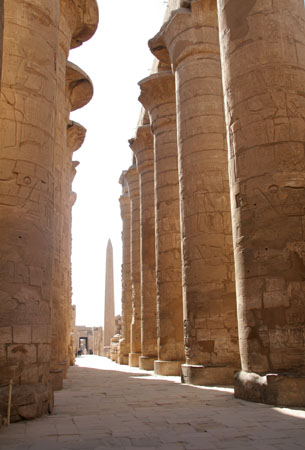
|
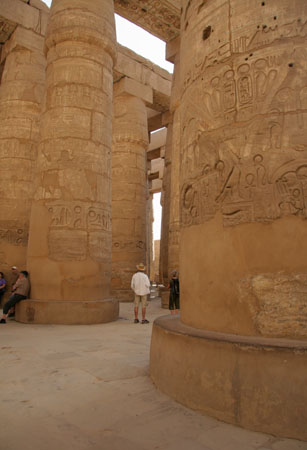
|
The first three days were spent in Luxor taking in the concentration of extraordinary ancient
monuments set in a city that is transforming itself to recapture the grandeur it once knew
when it was the Egyptian capitol for pharos for 500 years. Sitting on the bank of the Nile,
Luxor’s temples appeared impressive and foreboding with its entrances guarded by giant
statues and obelisks – quite intimidating now, let a lone 3000 years ago when there was
no comparison to their grandeur.
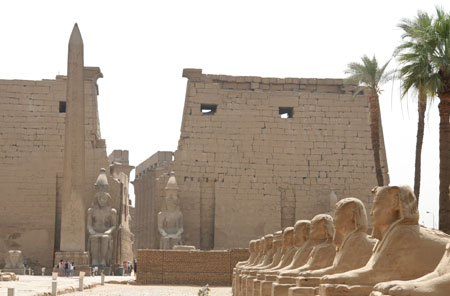
|
|
The Luxor Temple and Karnak Temple stretched my imagination with their huge pylons (entrance
walls), pillars, obelisks, and statues that dwarf viewers. Most surfaces were covered in
hieroglyphs even ceilings and the tops of obelisks that were unreadable from ground level.
Protected walls and ceilings still had bright paint hinting at the lavish setting they once
witnessed rather than their now monotone and serene appearance. In an attempt to uncover
more of the ancient city of Thebes, the roads and buildings between the Luxor Temple and
Karnak Temple were torn apart – an excavation revealing a road lined with sphinx 1.5 miles long.
|
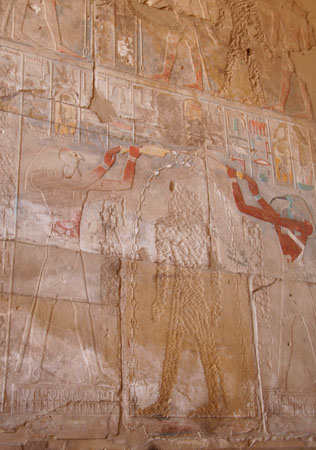 |
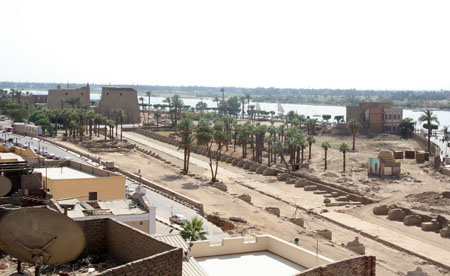
|
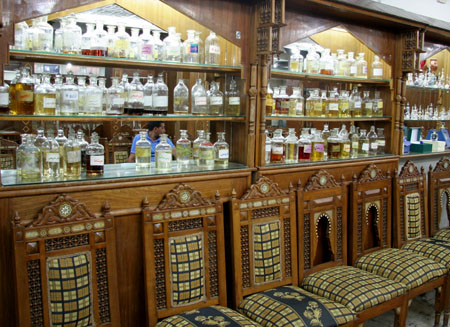 |
In addition to the ancient architectural sights it was also interesting to view the time tested
process of making papyrus paper and then seeing documents in museums 3000 years old made by the
same process. The perfume shops with racks of essences were an overwhelming delight for the nose.
|

|
|
I spent a day on the other side of the valley with a guide tramping around the hills Indiana Jones style!
It was a dream come true to explore 3000+ year old tombs, hike over desolate hills to distant ruins,
and poke around temples! The Valley of the Kings was a bone-dry area with tombs spotting desolate
hills and cliff faces. I toured a few tombs located high in the Valley oftentimes finding myself the
only person in the deep underground shafts. This allowed my imagination to run wild with thoughts booby-traps
coming from the niches and rituals performed long ago surrounded by painted hieroglyphs, and the
king’s treasure! Sadly cameras were not allowed in this area...
|
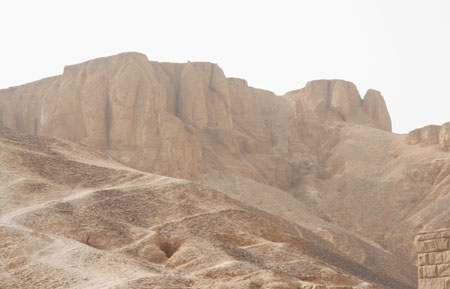 |
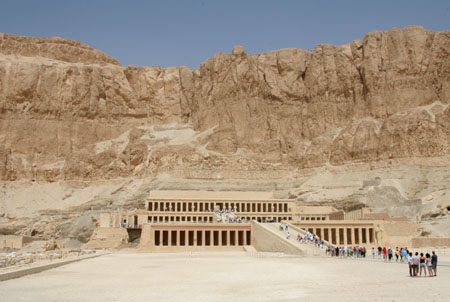
|
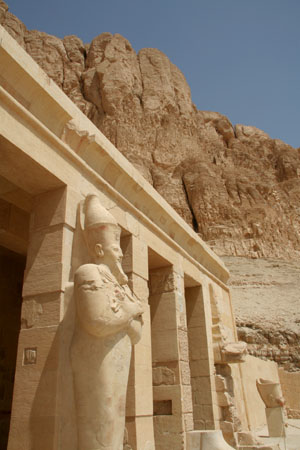 |
I then talked my less than enthusiastic guide to hike over the surrounding hills in the desert
conditions to the next temple Deir el-Bahri otherwise known as Hatshepsut’s Temple. As one would
imagine it was a hot and dry hike across the parched land. The perspective gained from the hike
made the tombs and dramatic temple all the more impressive imagining the brutal work conditions.
Lastly we visited the Workers Village, or Deir el-Medina, a valley encompassing the ruins of simple
dwellings, tombs, and small pyramids giving a glimpse into the common-man’s life in ancient Egypt.
|
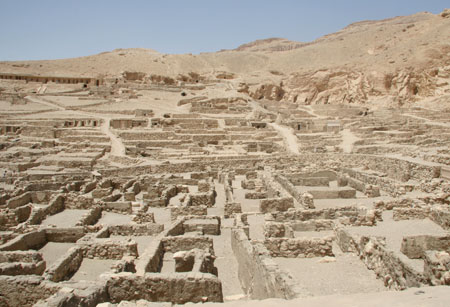
|
|
Next I sped down to Aswan in southern Egypt and ran around for a single day seeing the sights.
As it turned out it was my favorite place in country and could have spent much more time there.
The city epitomized Egypt - here an unimposing Nile coursed through the desert, a thin sliver of
life battling against the ever encroaching sands of the Sahara, a precarious balance that seemed
timeless.
|
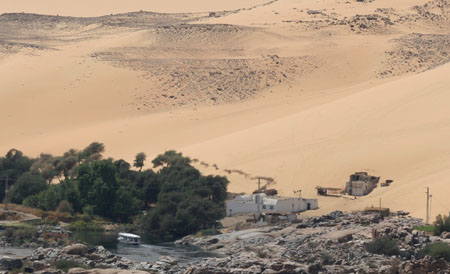 |
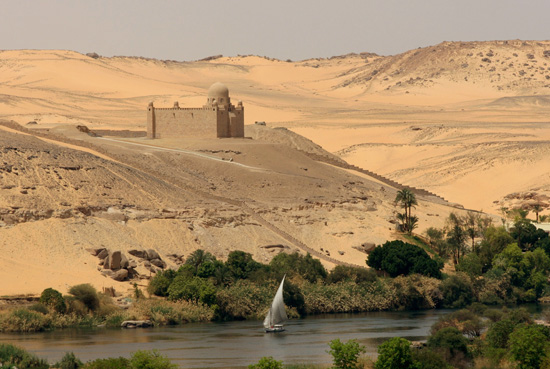
|
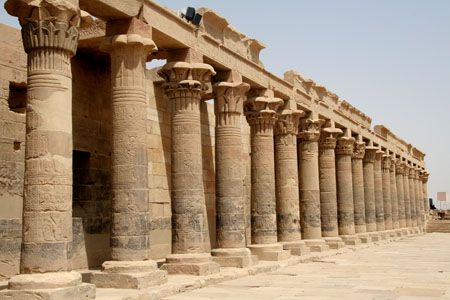 |
I hired a taxi for the day and viewed the Aswan dams that provide electricity for most of
Egypt and keep the crocodiles out of the heavily populated section of the Nile. I played
for a short time on the edge of the desert and stared out across the seemingly endless expanse
of uninhabitable land. Next I caught a boat out to the dream-like island of Philae. The
small island was packed with enchanting Egyptian and Roman temples with amazing views of the
lake in all directions – bringing to mind grand stories from Homer.
|
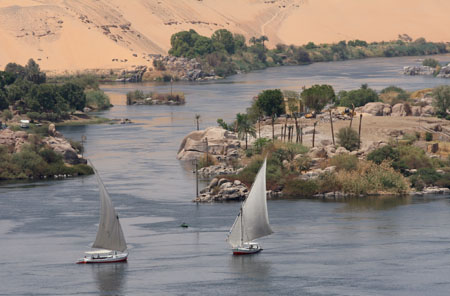
|
|
The day continued with an amazing Nubian meal overlooking Aswan where the juxtaposition of
the river and desert were very apparent. A lazy felucca (sail boat) ride on the Nile was
the perfect cap to the day with great views of papyrus reeds, birds, and children swimming –
all embracing that what permits life to flourish in an otherwise merciless land.
|
 |

|
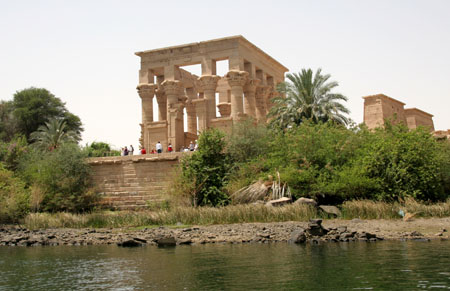
|
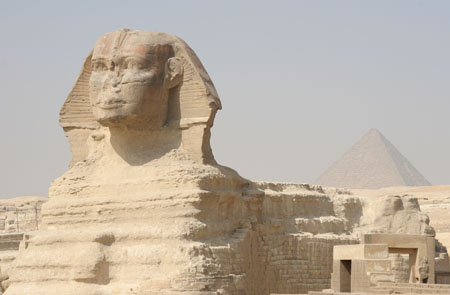 |
With much anticipation I then headed up to Cairo to view the pyramids, ancient artifacts in
museums, and most importantly meet up with Carly who was flying up from the election in the
Sudan! Surprisingly just a few miles outside of the great metropolis of Cairo are almost
one hundred pyramids rising like centuries, a first line of protection against the desolation
of the Sahara. The initial sighting through the morning haze was breathtaking and then hiking
around the bases of the Sphinx and each of the Great Pyramids – Cheops, Chephren, and
Mycerinus was amazing taking in the awesomeness of the size and effort required to create such
monuments! In an effort to preserve the impression of timelessness we skipped out of the area
well before the nighttime light show started up and visited some of the lesser known pyramids…
Next we visited the Red Pyramid which sat above a sea of date plantations that made up much of
the Nile Valley. The power that fed the lighting was out so we climbed 60m down a small steep shaft into the core
of the pyramid without guides or other tourists! The flashlights we bought with us barely
pierced the darkness, especially in the large chambers, leaving many shadows for mummies and
other spooky creatures to jump out from!
|
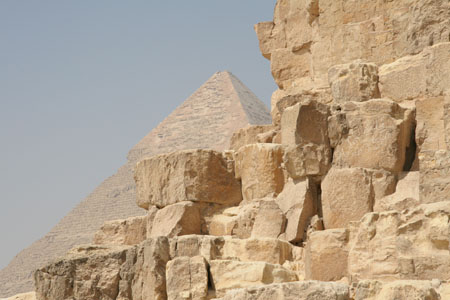
|
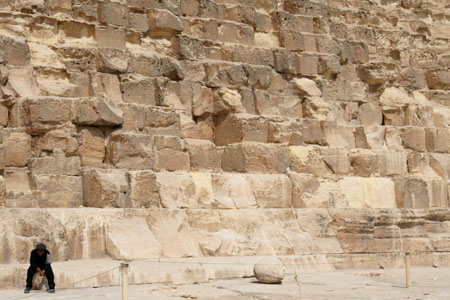
|
|
The rest of Cairo was very interesting to explore. The Cairo Museum held unbelievable
artifacts from tomb treasure, to ancient carpets, cheetah skin shields, boats, chariots,
a Rosetta Stone-like tablet, papyrus documents, and of course many sarcophaguses and mummies
(which I of course enjoyed hiding behind then jumping out and scaring unsuspecting people)! Walking the
streets of Cairo and visiting the Citadel, a castle and mosque in the Islamic section,
provided unique glimpses of the current Egyptian culture.
|
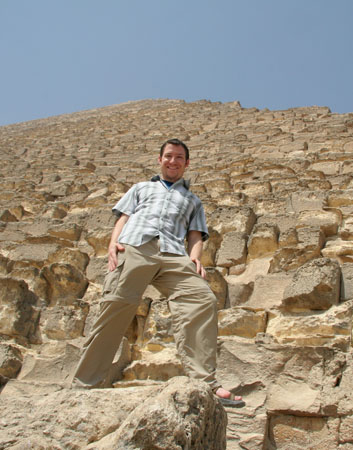 |
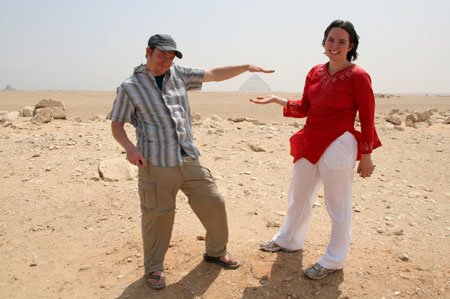
|
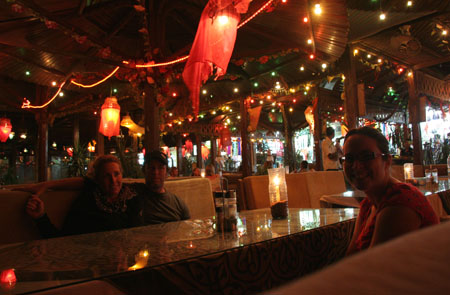 |
We met up with friends Jay and Darlene in Cairo and then traveled together to Dahab on the
Sinai Peninsula on the Gulf of Aqaba side. I had no idea that the Sinai mountain range was
so dramatic. They rose up immediately above the sea, jagged and seemingly desolate, although
scraggily plants and untended camels were spotted now and then as we traveled beneath the
rocky cliffs.
|
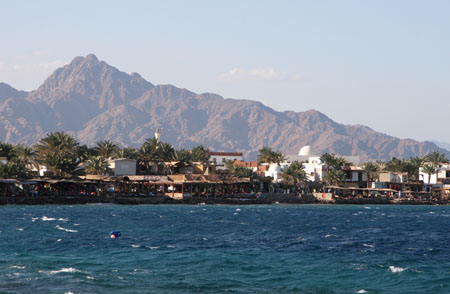
|
|
After the hustle and bustle of Cairo, Dahab was the perfect quiet, out-of-the-way town to
relax in for a while! It sits on the Gulf of Aqaba that spurs off the Red Sea and it was
set up for relaxation! Beautifully decorated open walled restaurants lined the beach -
perfect for lounging. On the back side of the restaurants is a walkway then shops and
hotels, many of which had their own dive shop – so everything was in one place except cars!
|
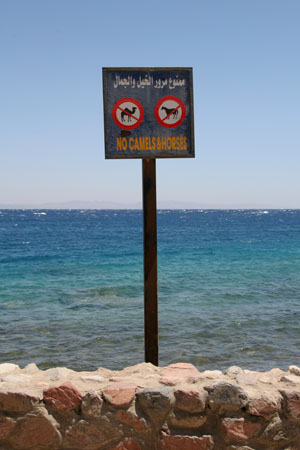 |
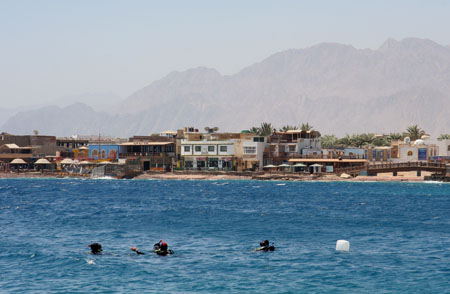
|
 |
The diving was amazing! Carly and I dived for two days (it was so great and reasonable
that we would have been happy with another week or two), meanwhile Jay and Darlene finished
their certification and actually did spend several more weeks there diving... The coral
reefs were healthy and thriving and what made it even better was they were shore dives so
we would walk from the hotel, between the restaurants and jump into the water and we were
at a reef! The reefs were teaming with schools of vibrant fish – one of the best areas I
have dived at! We also saw eels, crocodile fish, a sea turtle, puffer fish, an eagle ray,
giant clams, clown fish, barracuda, amazing coral, and so many lion fish that they stopped
being special!
|
Click to view a quick dive video! (1MB)

|
|
Our last adventure on this trip was a one day tour in Jordan to see Petra. We journeyed
below jagged mountains and through dry river valleys before climbing up into the mountains.
We went up so high that the air temperature was nice and cool, very surprising as I always
had a mental image of the entire Middle East being hot and dry. Tents of families herding
goats or tending hardy crops that dotted the hills.
|
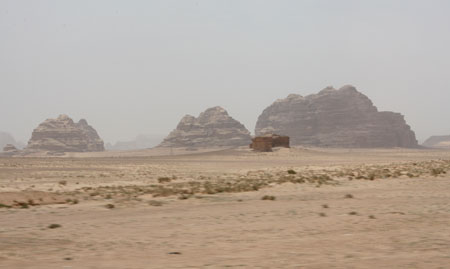 |
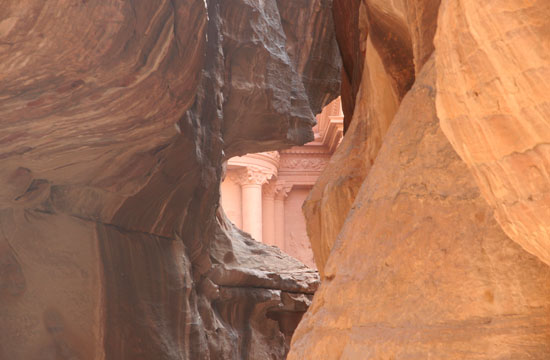
|
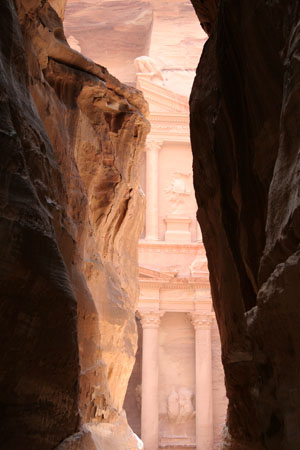 |
At Petra we joined the hoards of people making the trek down the canyon to see the famed
carvings. Long ago the river cut through the sandstone exposing beautiful multi-color
veins and creating an easily protectable/taxable caravan route. The area was dramatic
and timeless with many structures, temples, and an amphitheater cut into the rock walls.
Of course the most amazing was Al Khazneh, otherwise known as The Treasury.
It was breathtaking to see especially since we caught quick glimpses of it as we snaked
through the slot canyon until the full expanse of the ruin towered above us, serene and
enchanting.
|
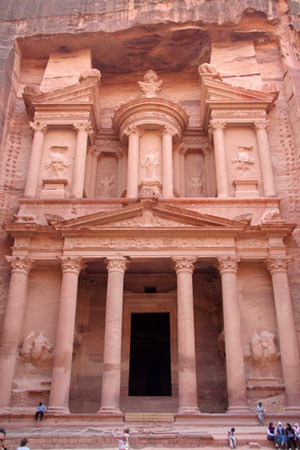
|
|
Well, unfortunately the day before we were to head home our near-favorite Icelandic volcano
Eyjafjallajökull stopped erupting and European airspace opened back up after a week of being
grounded... So sadly we dragged our feet heading home to return to work instead of setting
off East to discover what the long way back might hold in store for us… maybe next time!
|
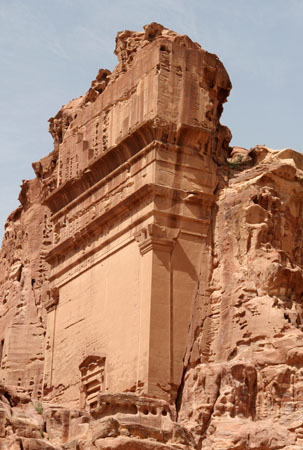 |
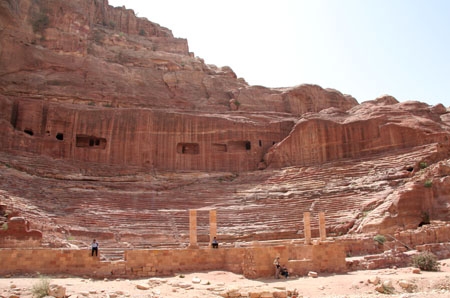
|
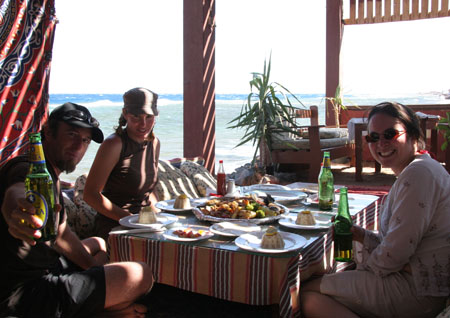 |
If you would like to see any other pictures of specific
parts of the experience, or want
higher resolution copies of what are on the web site, just let me know. Also, don't hesitate
to ask if you have any questions.
jon.pineau@colorado.edu
Check out some pictures from other trips
here
|



